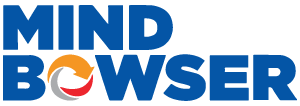Remote Patient Monitoring (RPM) is a major breakthrough in healthcare, allowing patients to be monitored and managed from the comfort of their homes instead of visiting a clinic. This technology offers patients more convenience while helping doctors keep a close eye on chronic conditions with real-time data. However, the success of RPM relies heavily on how well its user experience (UX) is designed. A great UX design makes it easier for patients to use, increases their willingness to stick with the program, and leads to better health outcomes.
The Importance of User Experience Design in Healthcare
User experience design in healthcare is crucial because it directly influences patient engagement and adherence to treatment protocols. An intuitive and user-friendly interface can reduce the learning curve associated with new technology, making it easier for patients to monitor their health and communicate with their healthcare providers. Improved UX design can lead to better patient outcomes by ensuring that patients can use RPM tools effectively, which in turn enhances the accuracy of health data collected and supports timely medical interventions.
Related Read: 16 Digital Healthcare UX Trends to Watch Out in 2024
➡️ Key Elements of Exceptional UX Design in RPM

1️⃣ Simplicity and Clarity
- Intuitive Navigation: RPM tools should feature straightforward navigation paths with clearly labeled buttons and sections. This ensures that patients, regardless of their tech-savviness, can easily understand how to use the device or app without confusion. For instance, step-by-step wizards or guided tutorials can assist users in setting up and using the device effectively.
- Minimalistic Design: A clutter-free interface helps patients focus on their health data without distraction. Essential features such as real-time health metrics, alerts, and communication options should be prominently displayed, while non-essential information should be minimized or hidden to avoid overwhelming the user.
2️⃣ Accessibility
- Inclusive Design: RPM tools must cater to a diverse patient population, including those with visual, auditory, or cognitive impairments. Features such as voice commands, large text options, and high-contrast modes ensure that all patients can use the technology effectively. For example, a visually impaired user might benefit from audio feedback or screen reader compatibility.
- Multi-Device Compatibility: Patients should have the flexibility to access their health information across different devices—smartphones, tablets, and desktops. This multi-platform approach ensures that patients can monitor their health data and communicate with their healthcare providers no matter which device they are using.
3️⃣ Engagement and Motivation
- Interactive Features: Integrating gamification elements such as achievement badges, progress bars, and interactive challenges can make health management more engaging. For instance, setting daily or weekly health goals and rewarding patients for meeting these goals can increase adherence to treatment plans.
- Personalization: Customizable features allow patients to tailor the RPM tools to their specific needs and preferences. This might include adjustable notification settings, personalized health insights, or the ability to track specific health metrics that are relevant to their condition.
Learn how we can help improve patient engagement and outcomes!
➡️ Health Apps with RPM Devices
🔹 Health and Fitness Apps
- User-Friendly Interfaces: Apps like Fitbit and MyFitnessPal are designed to provide a seamless and enjoyable user experience. They use visually appealing dashboards, easy-to-understand graphs, and interactive features to keep users motivated and engaged in their health goals.
- Social Features: Many fitness apps leverage social connectivity by allowing users to share their achievements, join community challenges, or participate in group activities. These social features can foster a sense of community and encourage users to stay committed to their fitness routines.

Learn How we Developed an IoT-Based Solution For Enhanced Fitness Insights
An innovative IoT application designed for iOS devices aimed to transform the exercise experience for patients. Developed to connect with hardware devices from innovative labs, the application offers advanced tracking capabilities. Users can monitor multiple exercise or sports activities, improving convenience and providing a comprehensive fitness tracking solution for all Apple device users.
🔹 RPM Devices
- Accuracy and Reliability: Unlike general fitness apps, RPM devices are designed to handle critical health data and must provide precise and consistent measurements. The accuracy of these devices is vital for effective disease management and timely intervention. For example, a blood pressure monitor used in RPM must provide readings that healthcare providers can trust to adjust treatment plans.
- Regulatory Compliance: RPM devices must adhere to stringent healthcare regulations and standards to ensure patient safety and data security. This includes compliance with data protection laws, such as HIPAA in the United States, and ensuring that the devices meet specific medical device standards.
- Patient Education: RPM tools often come with educational materials to help patients understand their health conditions and how to use the devices properly. This might include instructional videos, FAQs, and live support options to address any issues or questions that arise during use.
➡️ CPT Codes in RPM Billing
🔹Understanding CPT Codes
Current Procedural Terminology (CPT) codes are a set of standardized codes used to describe medical, surgical, and diagnostic services. In RPM, these codes are used to ensure that healthcare providers are appropriately reimbursed for the remote monitoring services they provide.
🔹Common CPT Codes for RPM
- 99453: Covers the initial setup and patient education on the use of RPM equipment. This includes teaching patients how to use the device and setting up any necessary software or applications.
- 99454: Covers the provision of the RPM device(s) and the daily monitoring of the patient’s health data for 30 days. This code is used for the ongoing supply and maintenance of the RPM device.
- 99457: Covers 20 minutes of remote monitoring and management by clinical staff, including reviewing data and communicating with the patient to discuss their health status and any necessary adjustments to their treatment plan.
- 99458: An add-on code for each additional 20 minutes of remote monitoring and management services provided beyond the initial 20 minutes covered by CPT code 99457.
🔹Billing Process
- Initial Setup: The initial setup and patient education are billed using CPT code 99453. This ensures that providers are compensated for the time and resources spent setting up the RPM device and educating the patient.
- Device Supply and Monitoring: The ongoing monitoring and maintenance of the device are billed monthly using CPT code 99454. This covers the cost of the device and the daily collection of health data.
- Monthly Management: The time spent managing and reviewing the patient’s data each month is billed using CPT code 99457. Additional time required for further management is billed using CPT code 99458.
➡️ The Role of Care Plans and Gamification in RPM
🔹Care Plans
- Personalized Plans: RPM tools often integrate personalized care plans that outline specific goals and actions for managing a patient’s health condition. These plans are tailored based on individual health data and needs, offering a structured approach to treatment.
- Regular Updates: Care plans should be reviewed and updated regularly based on new health data and patient feedback. This dynamic approach ensures that the care plan remains relevant and effective as the patient’s condition evolves.
🔹Gamification for Health Improvement
- Motivation Through Rewards: Gamification elements can increase patient motivation by providing rewards for achieving health goals. For example, patients might earn points or badges for completing daily health tasks or reaching specific milestones.
- Interactive Reminders: Features such as interactive reminders and feedback loops help patients stay engaged with their health management routine. These reminders can include prompts for medication adherence, exercise, or other health-related activities.
Conclusion
Wrapping up, user experience (UX) design is key to the success of Remote Patient Monitoring (RPM) programs. By prioritizing simplicity, accessibility, and engagement, healthcare providers can enhance patient compliance and trust, leading to better outcomes.
Good UX not only makes RPM tools easier to use but also strengthens the connection between patients and healthcare providers, enabling timely interventions and personalized care.
At Mindbowser, we recognize the vital role of user experience in Remote Patient Monitoring. Our dedication to creating intuitive and engaging designs ensures that patients can manage their health with confidence and ease, ultimately contributing to better health outcomes and a more connected healthcare experience.

Satyajit Mane, Senior UI/UX Designer
Satyajit is an experienced Senior UI/UX Designer with a strong emphasis on creating user-centered designs that balance aesthetics and functionality. He is passionate about designing intuitive and engaging user interfaces and excels in simplifying complex ideas into seamless experiences. Satyajit is dedicated to staying updated on industry trends, constantly honing his skills to create innovative designs that fulfill user needs and drive business success. His commitment to excellence and meticulous attention to detail ensure that his designs not only meet but exceed client expectations.
Let's Get In Touch
One thing that really stood out to me is the culture and values of the Mindbowser team.

Sanji Silva
Chief Product Officer, Mocingbird
I am so glad I worked with Mindbowser to develop such an Impactful Mobile app.

Katie Taylor
Founder and CEO, Child Life On Call
Mindbowser was an excellent partner in developing my fitness app.

Jirina Harastova
Founder, Phalanx Ubiquity
The team understood the challenges faced by both CME administrators and clinicians and translated that understanding into building the platform. We're totally impressed by their deep domain and technology expertise in creating a solution that empowers both administrators and medical professionals.

Ian Modam
CEO & Co-Founder, Mocingbird
Mindbowser team’s expertise and dedication has been instrumental in improving our platform’s efficiency. We have observed a reduction in average delivery time since the integration. Kudos to the wonderful team!!!!

Anish J. Shah
Founder, BirthModel
Mindbowser built both iOS and Android apps for Mindworks, that have stood the test of time. 5 years later they still function quite beautifully. Their team always met their objectives and I'm very happy with the end result. Thank you!

Bart Mendel
Founder, Mindworks
Some of the features conceived, implemented, and designed by the Mindbowser staff are amongst our most popular features.

Matthew Amsden
CEO, Proofpilot
Mindbowser is one of the reasons that our app is successful. These guys have been a great team.

Dave Dubier
Founder & CEO, MangoMirror
The Mindbowser team's professionalism consistently impressed me. Their commitment to quality shone through in every aspect of the project. They truly went the extra mile, ensuring they understood our needs perfectly and were always willing to invest the time to deliver exactly what we envisioned.

Spencer Barns
Chief Technology Officer, New Day Therapeutics
Kudos for all your hard work and diligence on the Telehealth platform project. You made it possible.

Joyce Nwatuobi
CEO, ThriveHealth
Post a comment Cancel reply
Related Posts
Patient Monitoring: A Guide for Healthcare Providers
Patient monitoring has become very important for healthcare providers. It offers real-time insights into a…
Top 4 Remote Patient Monitoring Use Cases for Hospitals
The global remote patient monitoring system market is projected to grow at a compound annual…
Data Security in Remote Patient Monitoring (RPM)
Remote Patient Monitoring (RPM) allows doctors to track patients’ health using technology without being nearby.…









